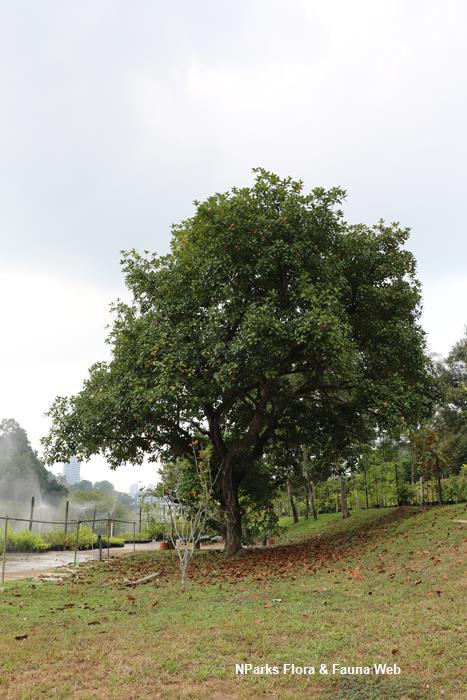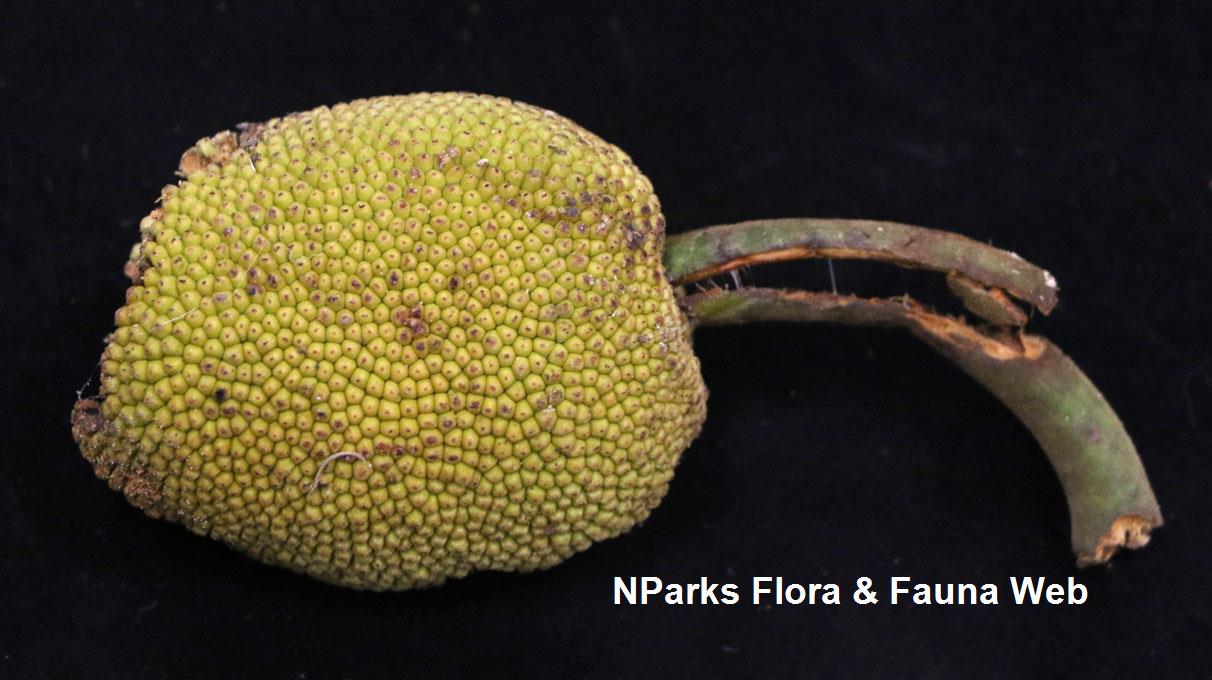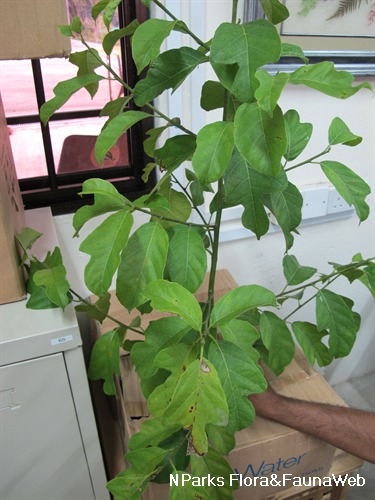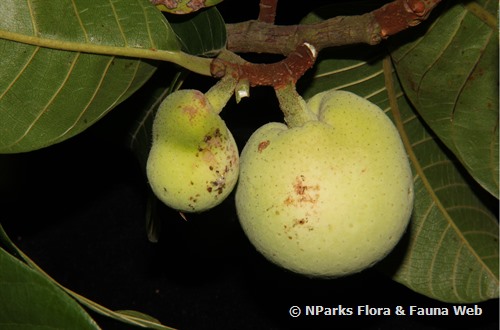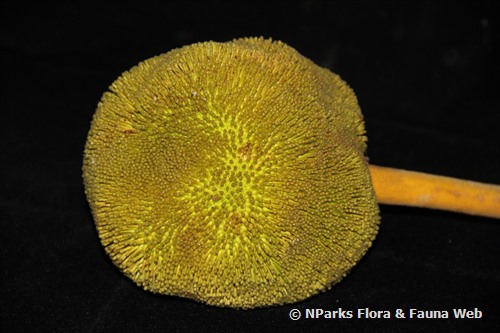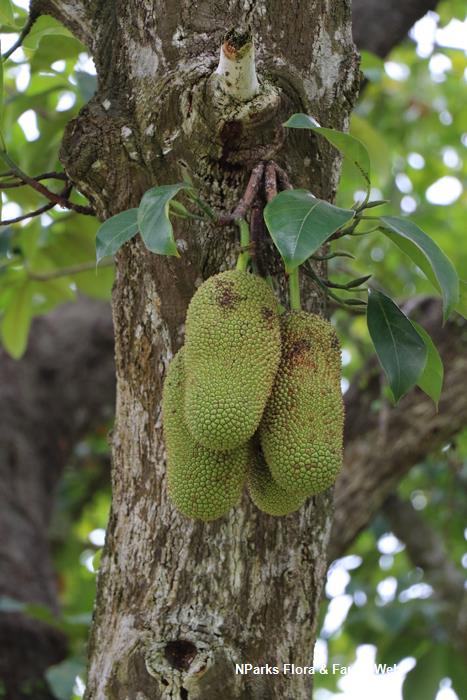
Back
Artocarpus integer (Thunb.) Merr. var. integer
| Family Name: | Moraceae |
| Common Name: | Cempedak, Champedah, Chempedak, Chempedak Utan, Bangkong, Baroh |
Name
Classifications and Characteristics
| Plant Division | Angiosperms (Flowering Seed Plants) (Dicotyledon) |
|---|---|
| Plant Growth Form | Tree |
| Lifespan (in Singapore) | Perennial |
| Mode of Nutrition | Autotrophic |
| Plant Shape | Irregular |
| Maximum Height | 20 m |
Biogeography
| Native Habitat | Terrestrial |
|---|---|
| Preferred Climate Zone | Tropical |
| Local Conservation Status | Cryptogenic |
Description and Ethnobotany
| Growth Form | It is a tree, up to 20 m tall. |
|---|---|
| Trunk | Trunk is bumpy in appearance. Bark is greyish brown in colour. |
| Foliage | Its stalked, alternate leaves are obovate to elliptic, covered with thin and stiff brown hairs, 5-25 cm long and 2.5-12 cm wide. Leaf tips are covered by stipules which are also covered with brown hairs. |
| Flowers | Plants are monoecious, bearing both male and female flowers on the same tree. The flowers are borne on solitary stalked inflorescences that can be at the leaf axils, on the tree trunk or on the branches. The male flowering head is cylindrical in shape, 3-5.5 cm long and 1 cm wide, and is yellowish white in colour. The female flowering head is similar, but with distinct filamentous styles on it. |
| Fruit | Its stalked fruits are cylindrical to almost round in shape, 20-35 cm long and 10-15 cm wide, yellowish-green to brown when ripe, emitting a pungent smell. The outer layer of the fruit is thick, leathery and somewhat bumpy. The seeds are covered by an orange aril that tastes sweet and pungent. |
| Habitat | It grows in primary and secondary forests, on wet hillsides. |
| Associated Fauna | Its fruits are eaten by small to large forest mammals. Common Flameback are occasionally observed to be feeding on the fruit. |
| Cultivation | It can be propagated from seed, budding, or grafting. |
| Etymology | Greek artos, bread; Greek karpos, fruit, referring to the bread-fruit tree; Latin integer, undivided, entire, intact, or whole. |
| Ethnobotanical Uses | Edible Plant Parts : Edible Fruits, Edible Leaves, Edible Seeds Food (Fruit or Vegetable): The orange, sweet and pungent aril is described as resembling those of a durian. The seeds are also edible after roasting or boiling in water. The young leaves are also said to be used as a vegetable. Cultural / Religious: Heritage Tree : There is currently one individual of Artocarpus integer listed as a Heritage Tree in Singapore. It can be found on Sentosa. To find out more about this tree, please visit the Heritage Tree Register. Others: Bark can be used to make rope while latex is used in the preparation of lime |
Landscaping Features
| Landscaping | It can be planted in parks or small gardens for its edible fruits. |
|---|---|
| Desirable Plant Features | Fragrant |
| Landscape Uses | Parks & Gardens, Small Gardens |
| Thematic Landscaping | Economic Garden |
Fauna, Pollination and Dispersal
| Seed or Spore Dispersal | Biotic (Fauna) (Vertebrates (Other Mammal)) |
|---|
Plant Care and Propagation
| Light Preference | Full Sun |
|---|---|
| Water Preference | Lots of Water, Moderate Water |
| Plant Growth Rate | Moderate |
| Rootzone Tolerance | Well-Drained Soils, Waterlogged Soils (Drains Site), Acidic (low pH) Soils, Fertile Loamy Soils |
| Propagation Method | Seed, Grafting |
| Planting Distance | 12 m to 14 m |
Foliar
| Foliage Retention | Evergreen |
|---|---|
| Mature Foliage Colour(s) | Green |
| Mature Foliage Texture(s) | Hairy / Hirsute |
| Foliar Modification | Stipule |
| Foliar Type | Simple / Unifoliate |
| Foliar Arrangement Along Stem | Alternate |
| Foliar Attachment to Stem | Petiolate |
| Foliar Shape(s) | Non-Palm Foliage (Obovate, Elliptical) |
| Foliar Venation | Pinnate / Net |
Non - Foliar and Storage
| Root Type | Underground (Tap Root) |
|---|
Floral (Angiosperm)
| Flower & Plant Sexuality | Unisexual Flowers , Monoecious |
| Flower Colour(s) | Cream / Off-White |
|---|
| Flower Grouping | Cluster / Inflorescence |
| Flower Location | Axillary, Cauliflorous |
Fruit, Seed and Spore
| Mature Fruit Colour(s) | Brown, Green - Light Green, Orange, Yellow / Golden |
|---|---|
| Mature Fruit Texture(s) | Leathery, Bumpy / Tuberculate |
| Fruit Classification | Aggregate Fruit (Syncarp) |
| Fruit Type |
Image Repository
Others
| Master ID | 5192 |
|---|---|
| Species ID | 3309 |
| Flora Disclaimer | The information in this website has been compiled from reliable sources, such as reference works on medicinal plants. It is not a substitute for medical advice or treatment and NParks does not purport to provide any medical advice. Readers should always consult his/her physician before using or consuming a plant for medicinal purposes. |

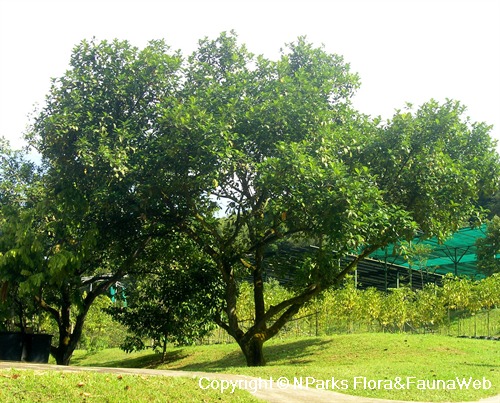
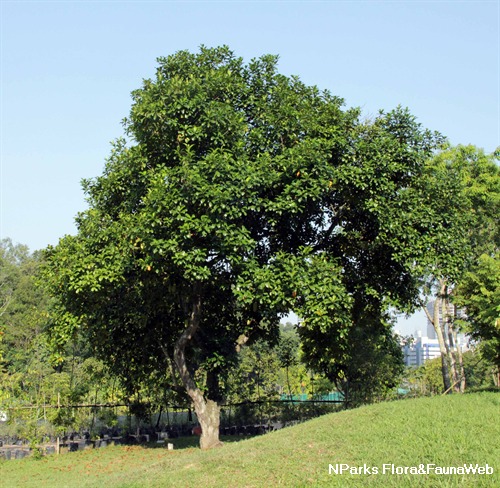
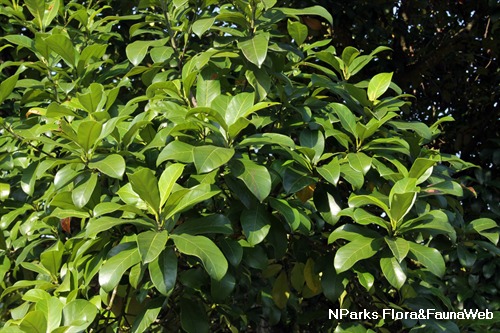
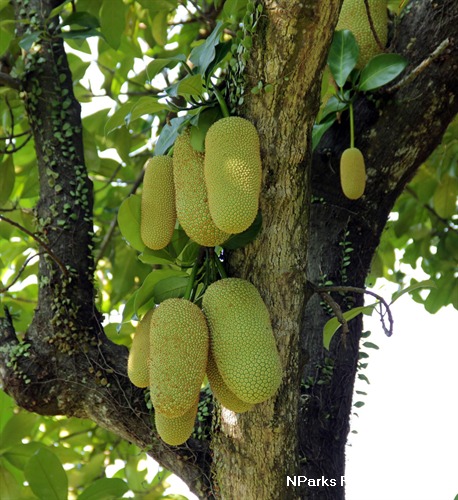
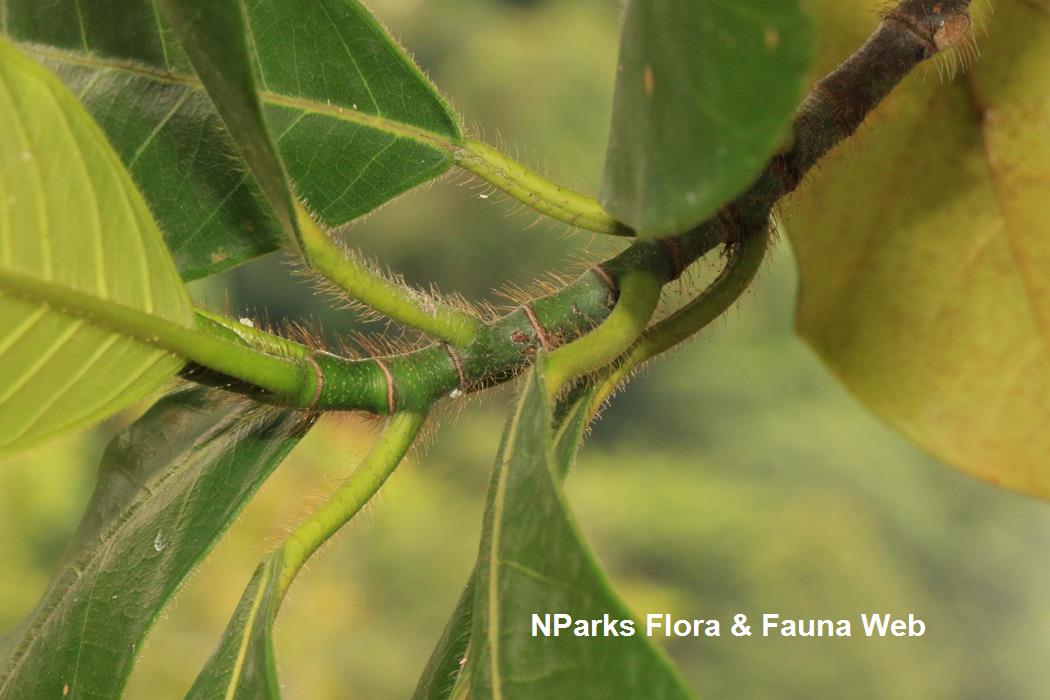
_lowres.jpg)
